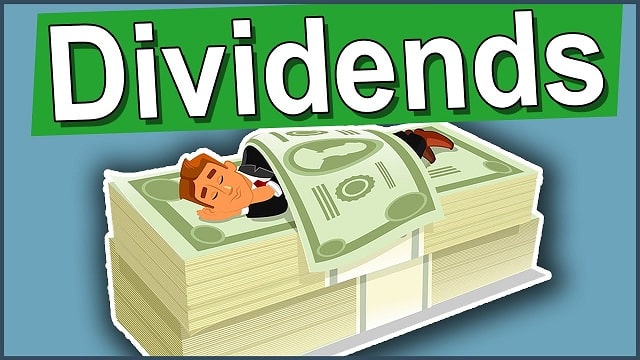What is a dividend?
The dividends is the proportion of profits that a company distributes among its shareholders.
Dividends: A Simple Explanation
Put more simply, dividends are basically a portion of profits that a company decides to share with its shareholders. If you own shares in a company, this means that you could receive money if the company decides to distribute it.
This money comes from the profits that the company has made. Thus, dividends are a way of thanking and rewarding shareholders for investing in the company.
This concept is part of a company’s liabilities, since it comes off its balance sheet in the form of profit distribution, encouraging shareholders to buy more shares in the company and, therefore, the company can obtain financing.
The amount must be approved at the General Shareholders’ Meeting, at the proposal of the Board of Directors. The amount of money that a company can distribute depends on how much profit it has generated and how much it needs to save for future investments or to cover risks.
Usually, when a company has many investment opportunities, the amount distributed decreases, since it has more sources of financing, although it is also true that it is not advisable to surprise shareholders with changes in the amount of these. For this reason, many companies try to maintain a stable dividend distribution policy.
It is very common to calculate them using net profit and payout, which is the percentage allocated to paying and remunerating shareholders.
Dividend = Net profit * Payout
Let’s imagine that a company has a net profit of 100 monetary units and has a payout of 25%. The company will pay an amount of:
Dividend = 100 * 25 Percent = 25 monetary units
Types of dividends
Generally speaking, there are these models:
- Interim dividend: paid to the shareholder in his cash account as an advance on the profit obtained.
- Complementary dividend: This is the one added to the dividend paid on account.
- Extraordinary dividends: These are distributed when there have been extraordinary profits.
- Stock dividend: distributed in shares, instead of cash.
- Fixed dividend: This is one that the company sets, regardless of the profit obtained.
Furthermore, we can distinguish between gross and net, depending on whether or not taxes on profits are included.
Applications of dividend policies can be:
- Constant annual.
- Fixed percentage on the profits of the year.
- Arbitrary at the convenience of the company. For example, there may be a minimum amount to which shares or dividends are added.
It is the company that establishes the criteria for the right to receive these payments by the shareholder, indicating until what date the shares must be deposited and purchased in the portfolio. Generally, share prices tend to fall the day after the distribution of dividends by the company.
The type of dividend that a company pays is something that stock analysts use when assessing whether it is interesting to invest in a certain company. Here is some related content in case you want to learn how to calculate the value of a company: Business Valuation Methods course.
Example of calculating dividends
Let’s assume the following data:
Using the Dividend Per Share (DPS) formula, we get: DPS = Dividend / Number of shares = ₹20 lakh / 5.5 lakh shares = 3.64 dollars per share.
Examples of calculating dividend yield
Here are some examples to consider when performing your calculations for dividend yield:
Example 1
StarTech trades at a price of $50. Throughout the year, the company paid 0.50 dollars per share each quarter in dividends. To find the company’s total dividend payment for the year, its finance team adds $0.50 + $0.50 + $0.50 + $0.50, which is $2. Next, it divides that total by the market value per share of 50 dollars, using this formula: Dividend yield = Annual dividends per share / Market value per share dividend yield = $2 / $50Dividend yield = 0.04
This gives StarTech a dividend yield of 0.04, or 4 percent, which means investors can earn 4% via dividends from the company’s shares.
Example 2
LinkTechs trades at a price of $150 and paid $9 per share each quarter in dividends. The company’s total dividend payment in a year is $36. To determine it is the dividend yield, the company uses this equation: Dividend yield = Annual dividends per share / Market value per share Dividend yield = 36 dollar / 150 dollar Dividend yield = 0.24
This result means LinkTechs has a dividend yield of 0.24, or 24%, meaning its investors earn 24 percent via dividends from the company’s shares.
Key points
- They are a portion of a company’s profits distributed among its shareholders.
- The amount to be distributed is decided at a shareholders meeting, following a recommendation from the company’s management.
- A company’s ability to pay dividends depends on its earnings and its financing needs for future projects or to mitigate risks.

